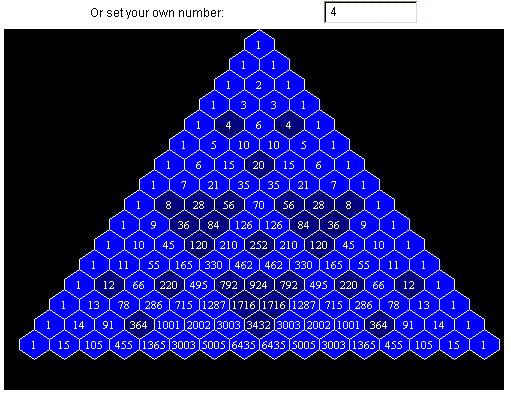Patterns in Pascal's Triangle
AbstractThis lesson is designed to show students that patterns exist in the Pascal's Triangle, and to reinforce student's ability to identify patterns. This is a good follow up lesson to Patterns in Fractals. ObjectivesUpon completion of this lesson, students will:
Standards Addressed:Textbooks Aligned:Student Prerequisites
Teacher Preparation
Key Terms
Lesson Outline
Alternate OutlineThis lesson can be rearranged in several ways:
Suggested Follow-Up
|

